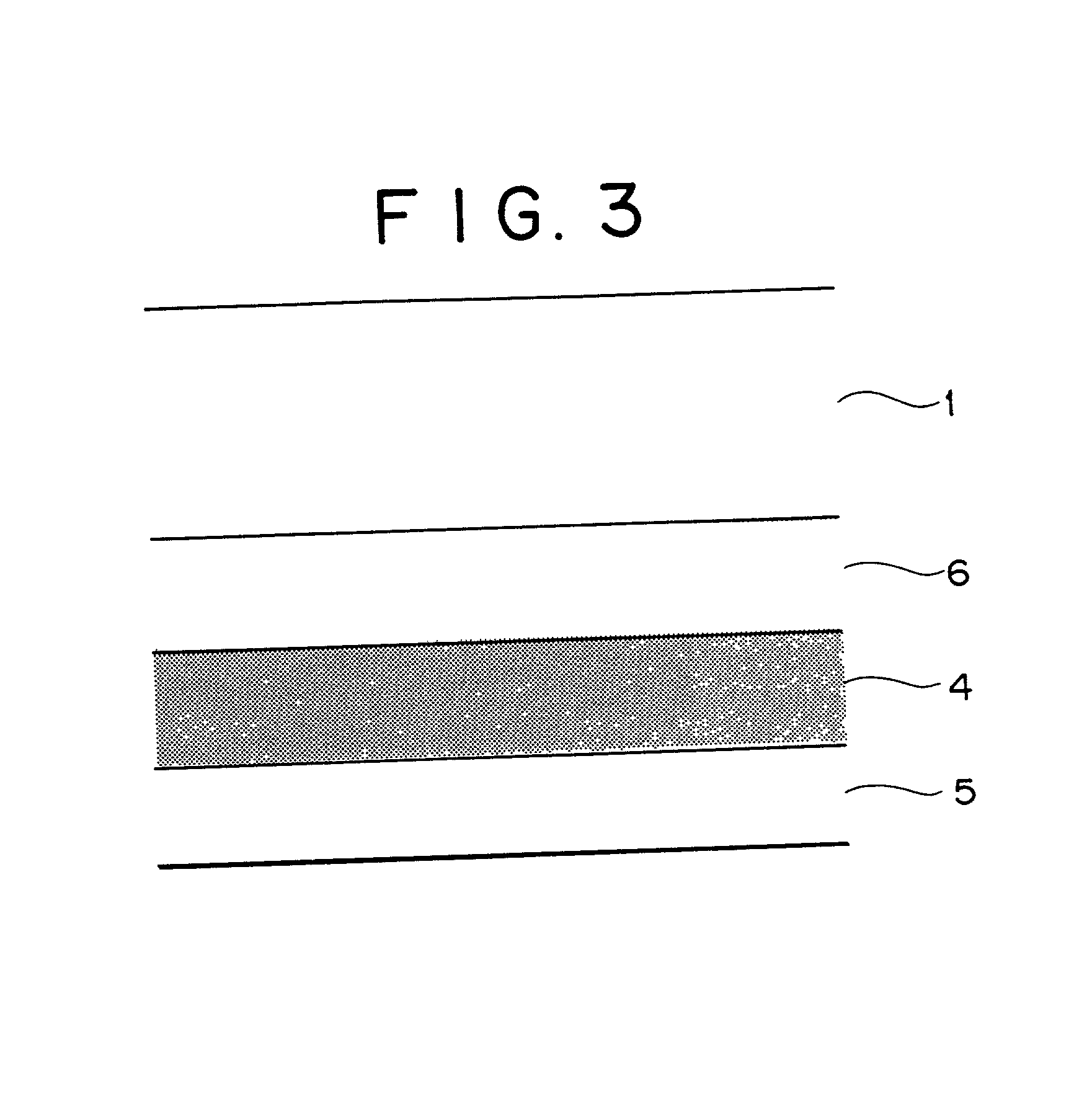Reflection layer or semi-transparent reflection layer for use in optical information recording media, optical information recording media and sputtering target for use in the optical information recording media
a technology of optical information and reflective layers, applied in the field of reflective layers or semi-transparent reflective layers for use in optical information recording media, can solve the problems of insufficient reflectivity, poor reflectivity in comparison with that of au or ag systems, and insufficient material materials for reflective layers capable of satisfying such requirements
- Summary
- Abstract
- Description
- Claims
- Application Information
AI Technical Summary
Benefits of technology
Problems solved by technology
Method used
Image
Examples
example 1
[0057] In this example, change of the crystal grain size before and after an environmental test was observed by using a transmission electron microscope (TEM).
[0058] As the specimens to be observed, specimens formed with each of alloy thin films of 1500 .ANG. thickness (reflective layer), i.e., various alloy thin films of pure Ag, pure Au, Ag-0.9%Cu-1.0%Au, Ag-0.5%Nd, Ag-0.5%Nd-0.9%Cu-1.0%Au on a transparent polycarbonate substrate (substrate size: 50 mm diameter, 1 mm thickness) by using a DC magnetron sputtering were used. The conditions for the environmental test were as shown below.
[0059] Sputtering apparatus: HSM-552 manufactured by Shimadzu Corporation,
[0060] Substrate temperature: 22.degree. C.
[0061] Ar gas pressure: 2 mTorr,
[0062] Ar gas flow rate: 30 sccm,
[0063] Background pressure: 5.times.10.sup.-6 torr
[0064] Substrate-target distance: 55 mm
[0065] Film deposition power: 260W
[0066] Substrate pre-treatment: RF sputter (200 W, 5 mTorr, 3 min)
[0067] Further, the conditions fo...
example 2
[0069] In this example, a correlation between the accelerated environmental test time and the crystal grain size was examined.
[0070] Various specimens shown in FIG. 14 were prepared in the same manner as in Example 1 and the crystal grain size was calculated according to TEM images. The results are shown in FIG. 14.
[0071] Among various alloys, change of the crystal grain size was scarcely observed in Nd-added Ag-1%Nd even when the retention time was increased, whereas the crystal grain size was increased remarkably as the retention time was increased in the Ag alloy in which the element other than Nd was added. While the crystal grain size increased along with the retention time also in pure Ag, when Au, Cu, In, Zn or Sn was added to Ag, the crystal grain size was increased particularly remarkably compared with pure Ag. However, when Nd was added to the elements (for example, Ag-1%Nd-1%Cu-1%Au alloy), since the crystal grain size was scarcely observed, it can be seen that the effect...
example 3
[0072] In this example, a correlation between the addition amount of the element and the crystal grain size before and after the environmental test in each of Ag binary alloy thin films was examined.
[0073] Various specimens shown in FIG. 15 were prepared in the same manner as in Example 1 and the crystal grain size was calculated according to TEM images and the results are shown in FIG. 15.
[0074] From the graph, remarkable effect of suppressing the increase of crystal grain size can be seen for Nd, compared with other elements. It can be seen that the effect can be provided by 0.1% addition but the effect is saturated even when a further greater amount is added.
PUM
| Property | Measurement | Unit |
|---|---|---|
| semi-transparent | aaaaa | aaaaa |
| semi-transparent | aaaaa | aaaaa |
| reflectivity | aaaaa | aaaaa |
Abstract
Description
Claims
Application Information
 Login to View More
Login to View More - R&D
- Intellectual Property
- Life Sciences
- Materials
- Tech Scout
- Unparalleled Data Quality
- Higher Quality Content
- 60% Fewer Hallucinations
Browse by: Latest US Patents, China's latest patents, Technical Efficacy Thesaurus, Application Domain, Technology Topic, Popular Technical Reports.
© 2025 PatSnap. All rights reserved.Legal|Privacy policy|Modern Slavery Act Transparency Statement|Sitemap|About US| Contact US: help@patsnap.com



